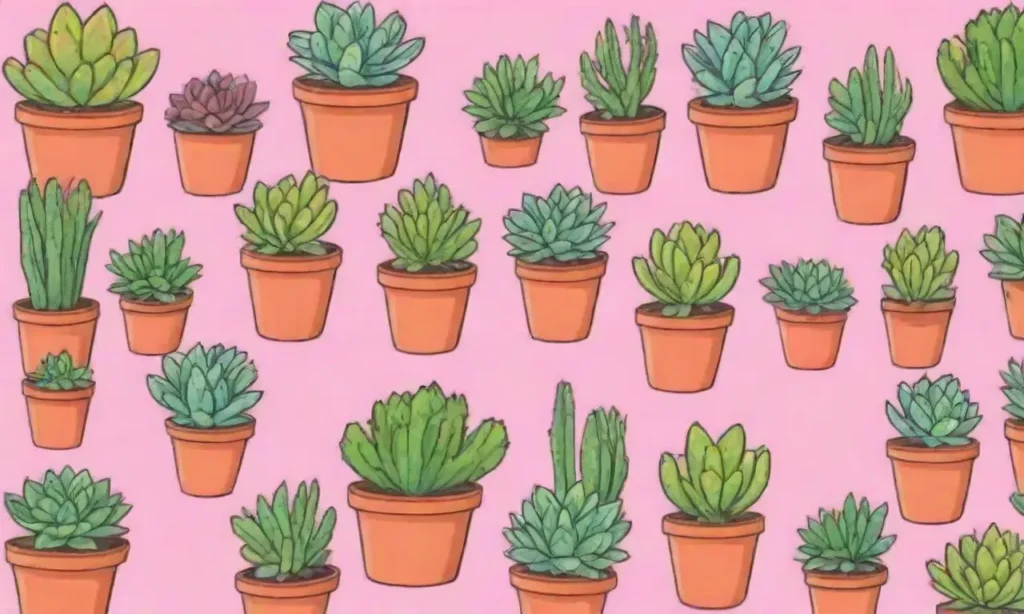
Common Mistakes to Avoid When Timing Succulent Propagation

Introduction
Succulent propagation has become a popular hobby for many plant enthusiasts due to its simplicity and the unique beauty of these fleshy plants. Propagating succulents can be a gratifying experience, as it allows gardeners to cultivate new plants from existing ones. However, timing is crucial to ensure a successful propagation process. A significant number of novice gardeners make mistakes in timing that lead to unsuccessful propagation attempts. Understanding these pitfalls can save both time and resources.
This article explores common mistakes that people make when determining the right time for succulent propagation. We will delve into several factors that influence successful propagation, including environmental conditions, plant health, and seasonal changes. By understanding these elements and avoiding the common mistakes highlighted here, you’ll ensure that your propagation efforts yield lush, flourishing succulents.
Understanding the Ideal Timing for Propagation
When it comes to succulent propagation, timing is everything. Choosing the right moment to propagate can mean the difference between success and failure. It is essential to fathom the concept of plant dormancy and growth phases. During winter, many succulents go dormant, significantly slowing their growth. This dormancy period is essential to consider, as attempting to propagate during this time may lead to stunted growth and a lack of root development in the cuttings.
Generally, spring and early summer are ideal times for succulent propagation, as the plants are entering their active growth phase. During this period, newly propagated cuttings have the best chance of developing healthy roots quickly. It is advisable to observe the specific succulent species you’re working with, as some may have variable growth seasons. Some types will flourish earlier or later depending on their native conditions.
Another crucial aspect to consider when timing your propagation is the sunlight exposure. Newly propagated cuttings require indirect sunlight to establish healthy roots. Propagating during periods of intense heat or direct sunlight can lead to sunburned leaves and wilting. Identifying the right balance of light and temperature is essential to ensuring that your cuttings thrive.
Mistake #1: Propagating During the Wrong Season
One of the most prevalent mistakes made by succulent enthusiasts is choosing the wrong season for propagation. As mentioned previously, spring and early summer are the recommended periods for succulent propagation, given that the plants have enough energy to heal and develop roots rapidly. Propagating succulents in winter, while they are dormant, can lead to multiple issues. The cuttings may fail to root, as the plant's energy is concentrated on survival rather than growth.
In addition, propagating during the cooler months can expose cuttings to lower humidity levels, which is detrimental to their success. Succulents thrive in warm and humid environments, so if you are attempting to propagate when conditions are unfavorable, you're ultimately setting yourself up for disappointment. Understanding the local climate will help you determine the most suitable months for propagation.
 Create a Yearly Calendar for Your Succulent Propagation Strategy
Create a Yearly Calendar for Your Succulent Propagation StrategyMoreover, be mindful of local conditions specific to your region. For instance, if you live in an area with mild winters, some succulents may still be viable for propagation during this period. Nonetheless, the general rule of thumb remains that spring is the safest option. Thus, it is essential to research which zone you're in and how that impacts the seasonal growth of your succulents.
Mistake #2: Insufficient Preparation of Cuttings

Another critical error involves the preparation of cuttings before propagation. Many novice gardeners assume that as long as they have a healthy cutting, they can proceed without much thought. However, proper preparation significantly increases the chances of success. One often overlooked step is allowing cuttings to callous before placing them in soil. Callousing helps prevent rot by forming a protective layer around the cut edge.
To callous succulents, simply cut a healthy leaf or stem, then place it in a dry, shaded area for several days. This wait allows the sap to dry out and seal the cut. In humid conditions, this process can take longer, so patience is critical. Skipping this step can lead to excessive moisture retention, bacterial growth, and eventual rot as the cutting is placed directly in the soil.
Also, it's essential to ensure the use of the right soil type for propagation. Regular potting soil may not provide the required drainage and aeration, leading to potential root issues. Instead, a specialized succulent or cactus mix is advisable. This type of soil is designed specifically for succulents, allowing for faster drainage and reducing the risk of rot — another common obstacle when propagating succulents.
Mistake #3: Ignoring Environmental Conditions
A common mistake that many make during succulent propagation is neglecting the importance of environmental conditions. Beyond seasonal timing, things like temperature, humidity, and light can significantly affect the success rate of your propagation endeavor. Ideal propagation conditions include a temperature range of 65°F to 75°F (18°C to 24°C), as most succulents prefer warmth. Extreme temperature fluctuations can stress the plants and impede root development.
Furthermore, humidity plays a vital role in maintaining the health of propagated cuttings. Many succulent varieties require a moderately humid environment; too little humidity can lead to dehydration, while excessive humidity can promote rot. To maintain proper humidity levels, consider using a humidity dome or a plastic bag to trap moisture while ensuring adequate airflow. Just be sure to monitor the situation carefully, as leaving the cuttings under high humidity for too long can backfire.
 Adapting Propagation Techniques to Seasonal Changes in Succulents
Adapting Propagation Techniques to Seasonal Changes in SucculentsLight also has a dual role in propagation success: adequate light encourages growth while too much direct sunlight can damage delicate cuttings. During the initial rooting stage, aim to provide bright, indirect sunlight. If the cuttings appear to be stretching or leaning, they might not be receiving enough light. On the other hand, if they look bleached or scorched, they're likely getting too much direct sunlight. A grow light can serve as an excellent alternative if natural light is limited.
Mistake #4: Overwatering the Cuttings
Overwatering is a trap that many succulent propagators easily fall into, especially those new to the art of propagation. Research suggests that one of the leading causes of failure in succulent cuttings results from excessive moisture. Unlike other houseplants, succulents store water in their leaves and stems, so their watering needs are unique. Newly propagated cuttings should be watered sparingly until roots have fully developed.
After preparing the cuttings and placing them in the soil, wait about a week before giving them any water. By that time, the cuttings will have formed a callous over the cut surface, reducing the risks of rot. Water the soil until it is lightly moist, but avoid saturating it. As the weeks pass and roots begin to develop, you can determine the watering schedule according to your specific environment and climate.
Keep in mind that indoor environments may require less frequent watering, while outdoor propagated plants may need more attention due to exposure to the elements. Paying close attention to visible signs of stress can also help in assessing watering needs. For example, if you notice shriveling leaves, it might indicate that your cutting requires some moisture, while mushy leaves point towards overwatering.
Conclusion
In conclusion, timing is indeed an integral element to the success of succulent propagation. Understanding the ideal seasons and conditions necessary for successful propagation will give you a robust foundation as you embark on building your succulent collection. By avoiding common mistakes associated with timing, preparation, environmental factors, and watering, you can cultivate a vibrant brood of flourishing succulents.
Take the time to observe your plants and their environments, adjust your techniques, and learn from any propagation attempts that don't go as planned. Gardening is a journey that thrives on trial and error. As you gain experience and enrich your knowledge, you'll find yourself enriched in rewards as your succulents grow into healthy, beautiful creations.
Remember that every gardening endeavor provides a wealth of information that you can carry into your future propagation attempts. By adhering to the guidelines outlined here and being patient, you’ll pave the way for success in succulent propagation, allowing for an endless supply of these stunning plants to enjoy and share!
 Propagating Succulents Across Different Zones: A Timing Guide
Propagating Succulents Across Different Zones: A Timing GuideIf you want to read more articles similar to Common Mistakes to Avoid When Timing Succulent Propagation, you can visit the Propagation Timing category.






You Must Read